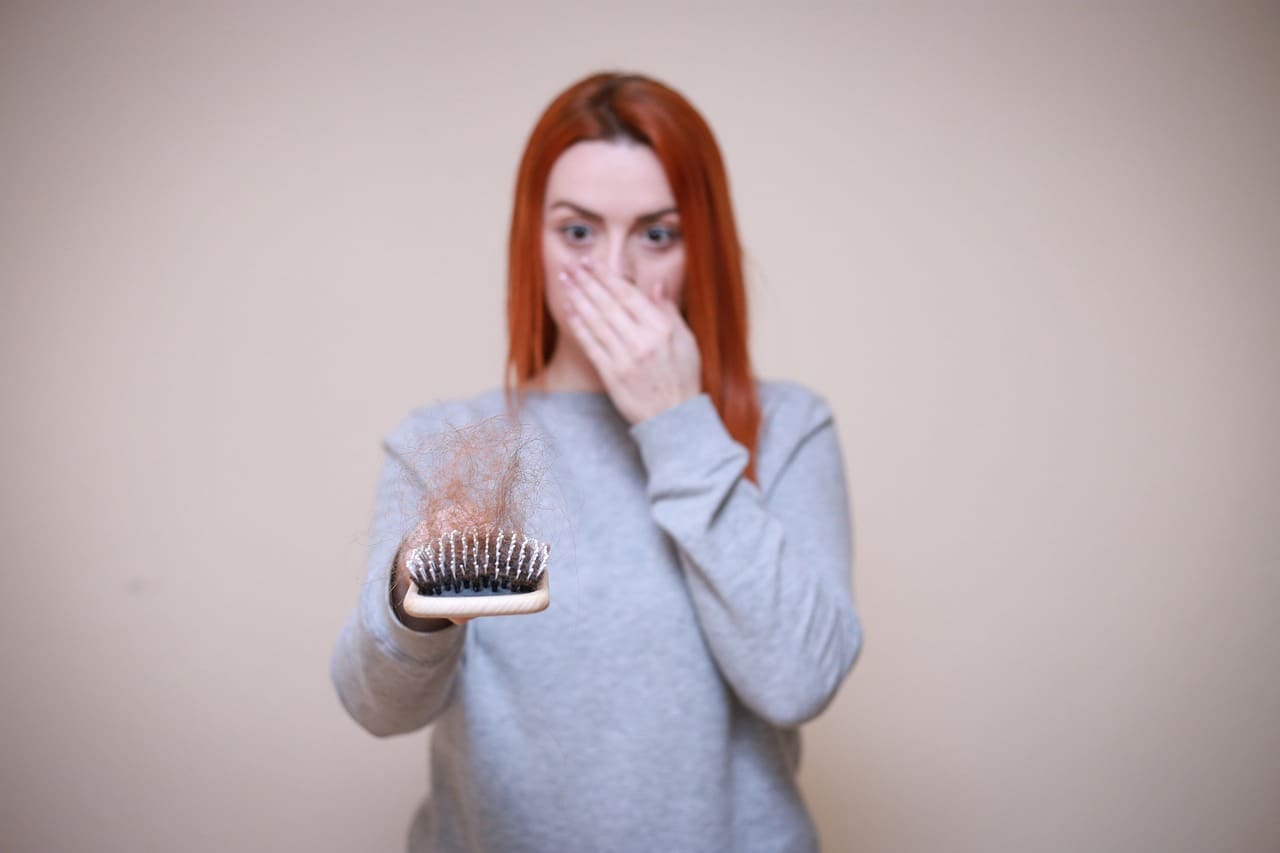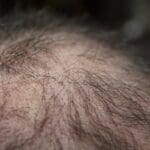The Role of Hormones in Female Hair Loss
This article delves into the fascinating connection between hormones and female hair loss. It aims to shed light on the main hormones involved in this process and their significant impact on hair growth and loss. Understanding the intricate relationship between hormones and hair health is crucial for finding effective solutions to combat hair loss in women.
Hormones play a vital role in regulating various bodily functions, and hair growth is no exception. In women, the balance of hormones is particularly important for maintaining healthy hair. Fluctuations or imbalances in hormone levels can disrupt the natural hair growth cycle, leading to hair loss.
By exploring the intricate interplay between hormones and hair health, we can gain valuable insights into the underlying causes of female hair loss. This knowledge can empower women to make informed decisions about their hair care and seek appropriate treatments to address the issue.
Estrogen and Hair Loss
Estrogen is a key hormone for hair growth in women. It plays a vital role in maintaining the hair follicles and promoting healthy hair growth. However, imbalances or fluctuations in estrogen levels can disrupt this process and lead to hair loss.
When estrogen levels are too high or too low, it can have a negative impact on the hair follicles. High levels of estrogen can cause the hair to enter a prolonged resting phase, known as telogen, where the hair stops growing and eventually falls out. On the other hand, low levels of estrogen can lead to a shorter anagen phase, which is the active growth phase of the hair follicles. This can result in thinning hair and increased hair shedding.
It’s important to note that estrogen levels can be influenced by various factors, including age, genetics, and overall health. For example, during menopause, estrogen levels naturally decline, which can contribute to hair loss in women. Additionally, certain medical conditions or medications can also affect estrogen levels and impact hair growth.
To maintain healthy estrogen levels and promote hair growth, it’s important to maintain a balanced lifestyle. This includes eating a nutritious diet, exercising regularly, managing stress levels, and avoiding excessive use of hair-styling products or treatments that can damage the hair follicles. Additionally, consulting with a healthcare professional can help identify any underlying hormonal imbalances and provide appropriate treatment options.
Testosterone and Hair Loss
Testosterone, although primarily considered a male hormone, is also produced in smaller amounts by women. While it plays a crucial role in various bodily functions, imbalances or sensitivity to testosterone can contribute to hair loss in women.
When testosterone levels in women are too high or when there is an imbalance between testosterone and other hormones, it can lead to a condition known as androgenetic alopecia or female pattern hair loss. This condition is characterized by thinning of the hair on the scalp, particularly in the frontal and crown areas.
Testosterone can affect hair follicles and disrupt the normal hair growth cycle. It can shrink hair follicles, leading to thinner and shorter hair strands. Additionally, it can also increase the production of a hormone called dihydrotestosterone (DHT), which is known to contribute to hair loss.
While testosterone-related hair loss is more common in men, women with conditions such as polycystic ovary syndrome (PCOS) or other hormonal imbalances may experience higher levels of testosterone, leading to hair loss. It is important to note that not all women with high testosterone levels will experience hair loss, as individual sensitivity to testosterone can vary.
Addressing testosterone-related hair loss in women often involves identifying and treating the underlying hormonal imbalances. This can include hormone replacement therapy, which aims to restore hormonal balance by supplementing or regulating hormone levels. Anti-androgen medications may also be prescribed to block the effects of testosterone on the hair follicles.
It is essential for women experiencing hair loss to consult with a healthcare professional or a dermatologist who specializes in hair disorders. They can assess hormone levels, identify any underlying conditions, and recommend appropriate treatment options.
Androgenetic Alopecia
Androgenetic alopecia, also known as female pattern hair loss, is a condition that affects many women and is influenced by hormones, particularly testosterone. This subsection will delve into the hormonal factors that contribute to this condition.
Testosterone, although primarily considered a male hormone, is also present in smaller amounts in women. Imbalances or sensitivity to testosterone can lead to the development of androgenetic alopecia. This condition is characterized by a gradual thinning of the hair, especially in the frontal and crown areas of the scalp.
One of the key factors in the development of androgenetic alopecia is the conversion of testosterone into dihydrotestosterone (DHT) by the enzyme 5-alpha reductase. DHT has a damaging effect on hair follicles, causing them to shrink and produce thinner and shorter hair strands. Over time, this can result in hair loss and a noticeable decrease in hair volume.
In addition to testosterone and DHT, other hormones such as estrogen and progesterone also play a role in the development of androgenetic alopecia. Hormonal imbalances or fluctuations can disrupt the normal hair growth cycle and contribute to hair loss.
While genetics also play a significant role in the development of androgenetic alopecia, hormonal factors cannot be ignored. Understanding the hormonal influences behind this condition is crucial in developing effective treatment strategies.
DHT and Hair Loss
Dihydrotestosterone (DHT) is a derivative of testosterone that plays a crucial role in hair loss. When it comes to female hair loss, DHT can have a significant impact on hair follicles and contribute to the problem.
DHT is formed when an enzyme called 5-alpha reductase converts testosterone into its more potent form, DHT. While testosterone is an important hormone for both men and women, excessive levels of DHT can be detrimental to hair follicles.
So, how does DHT affect hair follicles? Well, DHT binds to specific receptors in the hair follicles, causing them to shrink and become less productive. This process is known as miniaturization, and it leads to the gradual thinning of the hair shafts.
Over time, the miniaturized hair follicles produce thinner and shorter hairs, eventually leading to hair loss. This is why DHT is often associated with conditions like androgenetic alopecia, or female pattern hair loss.
It’s important to note that not all hair follicles are equally sensitive to DHT. Some individuals may have hair follicles that are more susceptible to the effects of DHT, while others may have a higher tolerance.
Understanding the role of DHT in female hair loss is crucial for developing effective treatments. Many hair loss treatments aim to block or inhibit the production of DHT, helping to preserve hair follicles and promote hair growth.
In conclusion, DHT, a derivative of testosterone, plays a significant role in hair loss. By binding to hair follicle receptors, DHT causes the gradual thinning of hair shafts and the miniaturization of hair follicles. Understanding the impact of DHT on female hair loss is essential for developing targeted treatments and solutions.
Other Hormonal Causes
Other Hormonal Causes
Apart from estrogen and testosterone, there are other hormones that can play a role in female hair loss. Two such hormones are thyroid hormones and cortisol. Let’s explore how these hormones can impact hair growth.
Thyroid Hormones:
The thyroid gland produces hormones that regulate metabolism, growth, and development. When there is an imbalance in thyroid hormone levels, it can lead to hair loss. Hypothyroidism, or an underactive thyroid, is a common condition that can cause hair thinning and loss. On the other hand, hyperthyroidism, or an overactive thyroid, can also contribute to hair shedding.
Cortisol:
Cortisol is a hormone released by the adrenal glands in response to stress. Chronic stress can lead to an increase in cortisol levels, which can disrupt the hair growth cycle. High levels of cortisol can cause hair follicles to enter a resting phase, leading to hair loss. Additionally, cortisol can also affect the immune system, leading to conditions like alopecia areata, where the immune system mistakenly attacks the hair follicles.
Impact on Hair Growth:
Both thyroid hormones and cortisol can disrupt the normal hair growth cycle. Hair follicles have a growth phase (anagen), a transitional phase (catagen), and a resting phase (telogen). Imbalances in thyroid hormones and high levels of cortisol can cause more hair follicles to enter the resting phase, resulting in hair thinning and loss.
Treatment and Management:
If you suspect that imbalances in thyroid hormones or high cortisol levels are contributing to your hair loss, it is important to consult with a healthcare professional. They can perform tests to assess your hormone levels and recommend appropriate treatment options. Treatment may involve addressing the underlying thyroid condition or managing stress levels through relaxation techniques, exercise, and lifestyle changes.
In conclusion, while estrogen and testosterone are key hormones in female hair loss, it is important to consider other hormonal factors such as thyroid hormones and cortisol. Understanding the role of these hormones can help in identifying the underlying causes of hair loss and exploring appropriate treatment options.
Postpartum Hair Loss
Many women experience hair loss after giving birth due to hormonal changes. This section discusses the hormonal factors involved in postpartum hair loss and its temporary nature.
Postpartum hair loss, also known as telogen effluvium, is a common condition that affects many women after childbirth. During pregnancy, hormonal changes cause an increase in estrogen levels, which prolongs the hair growth phase and results in thicker, fuller hair. However, after giving birth, estrogen levels drop significantly, leading to a shedding phase known as postpartum hair loss.
The hormonal factors involved in postpartum hair loss are primarily related to the sudden decrease in estrogen levels. Estrogen plays a crucial role in promoting hair growth, and when its levels drop, the hair follicles enter a resting phase, causing the hair to fall out. This shedding typically occurs around three to four months after childbirth and can last for several months.
It’s important to note that postpartum hair loss is a temporary condition and does not indicate a more serious underlying health issue. The hair usually regrows on its own once hormone levels stabilize. However, the extent of hair loss can vary from person to person, and it may take some time for the hair to fully recover.
During the postpartum period, it is essential to take care of your hair and scalp to support healthy regrowth. This can be done by maintaining a balanced diet, staying hydrated, and using gentle hair care products. Additionally, managing stress levels and getting enough rest can also contribute to overall hair health.
In conclusion, postpartum hair loss is a temporary condition that occurs due to hormonal changes after giving birth. Understanding the hormonal factors involved can help women navigate this period with confidence, knowing that their hair loss is a normal part of the postpartum experience. With time and proper care, the hair will gradually regrow, restoring its natural thickness and volume.
Hormonal Treatments for Hair Loss
Female hair loss can be a distressing experience, but there are various hormonal treatments available to address this issue. Hormone replacement therapy (HRT) is one such treatment option. HRT involves the use of estrogen and progesterone to restore hormonal balance in women. By replenishing these hormones, HRT can help promote hair growth and prevent further hair loss.
In addition to HRT, anti-androgen medications are also commonly used to treat female hair loss. Androgens, such as testosterone, can contribute to hair loss in women. Anti-androgen medications work by blocking the effects of these hormones, reducing their impact on hair follicles. This can help slow down hair loss and potentially stimulate new hair growth.
It is important to note that hormonal treatments for hair loss should always be prescribed and monitored by a healthcare professional. They will consider various factors such as the underlying cause of hair loss, overall health, and any potential side effects before recommending the appropriate treatment.
- Hormone replacement therapy (HRT) – This treatment involves the use of estrogen and progesterone to restore hormonal balance in women.
- Anti-androgen medications – These medications work by blocking the effects of androgens, such as testosterone, on hair follicles.
While hormonal treatments can be effective for addressing female hair loss, it is essential to understand that results may vary for each individual. It is also worth mentioning that these treatments may have potential side effects, which should be discussed with a healthcare professional before starting any treatment regimen.
Potential Side Effects
Hormonal treatments for hair loss can have side effects that need to be considered before undergoing such treatments. While these treatments can be effective in addressing female hair loss, it is important to be aware of the potential risks and complications that may arise.
One potential side effect of hormonal treatments for hair loss is hormonal imbalances. These treatments involve altering the levels of certain hormones in the body, which can disrupt the natural hormonal balance. This imbalance can lead to various symptoms such as mood swings, weight gain, and changes in menstrual cycles.
Another possible side effect is allergic reactions to the medications used in hormonal treatments. Some individuals may experience itching, rashes, or swelling at the site of application or ingestion. It is important to consult with a healthcare professional to determine if you are allergic to any of the medications used in hormonal treatments.
In addition, hormonal treatments may have an impact on fertility and pregnancy. Some medications used in these treatments can affect the reproductive system and may interfere with conception or pregnancy. It is crucial for women who are planning to conceive or are already pregnant to discuss the potential risks with their healthcare provider.
Furthermore, hormonal treatments for hair loss may have interactions with other medications or medical conditions. It is important to inform your healthcare provider about any other medications you are taking or any underlying medical conditions you have. This will help them determine if hormonal treatments are suitable for you and if any adjustments need to be made.
In rare cases, hormonal treatments can lead to more serious complications such as blood clots or liver damage. These risks are generally associated with long-term use of certain medications. It is essential to closely monitor your health and report any unusual symptoms to your healthcare provider.
It is important to note that the side effects mentioned here are not exhaustive, and individual experiences may vary. It is crucial to consult with a healthcare professional before starting any hormonal treatments for hair loss. They can provide personalized guidance and help weigh the potential benefits against the risks.
Frequently Asked Questions
- What is the role of hormones in female hair loss?
Hormones play a crucial role in female hair loss. Imbalances or fluctuations in hormones can contribute to hair loss in women.
- How does estrogen affect hair loss in women?
Estrogen is a key hormone for hair growth in women. Imbalances or fluctuations in estrogen levels can lead to hair loss.
- Can testosterone contribute to hair loss in women?
While testosterone is primarily a male hormone, women also produce it in smaller amounts. Imbalances or sensitivity to testosterone can contribute to hair loss in women.
- What is androgenetic alopecia?
Androgenetic alopecia, commonly known as female pattern hair loss, is influenced by hormones like testosterone. It is a hereditary condition that causes gradual hair thinning and loss.
- How does DHT contribute to hair loss?
Dihydrotestosterone (DHT), a derivative of testosterone, plays a crucial role in hair loss. It binds to hair follicles and causes them to shrink, leading to hair thinning and eventual loss.
- Are there other hormones that can impact hair growth?
Apart from estrogen and testosterone, other hormones like thyroid hormones and cortisol can also impact hair growth. Imbalances in these hormones can contribute to hair loss in women.
- Why do women experience hair loss after giving birth?
Hormonal changes that occur after giving birth can lead to hair loss in women. This condition, known as postpartum hair loss, is temporary and usually resolves on its own.
- What hormonal treatments are available for female hair loss?
There are various hormonal treatments available for female hair loss, including hormone replacement therapy and anti-androgen medications. These treatments aim to balance hormone levels and promote hair growth.
- Are there any potential side effects of hormonal treatments for hair loss?
Yes, hormonal treatments for hair loss can have potential side effects. It is important to discuss these risks with a healthcare professional before starting any hormonal treatment.








Leave a Reply